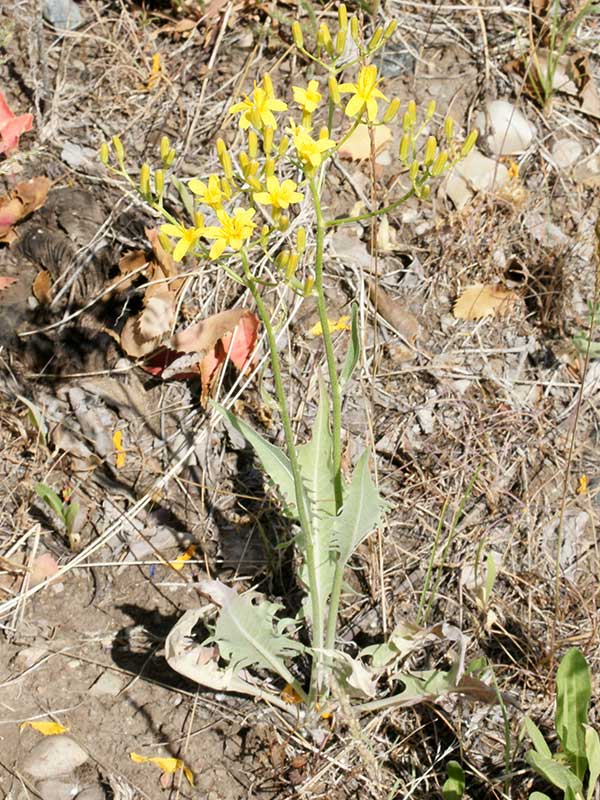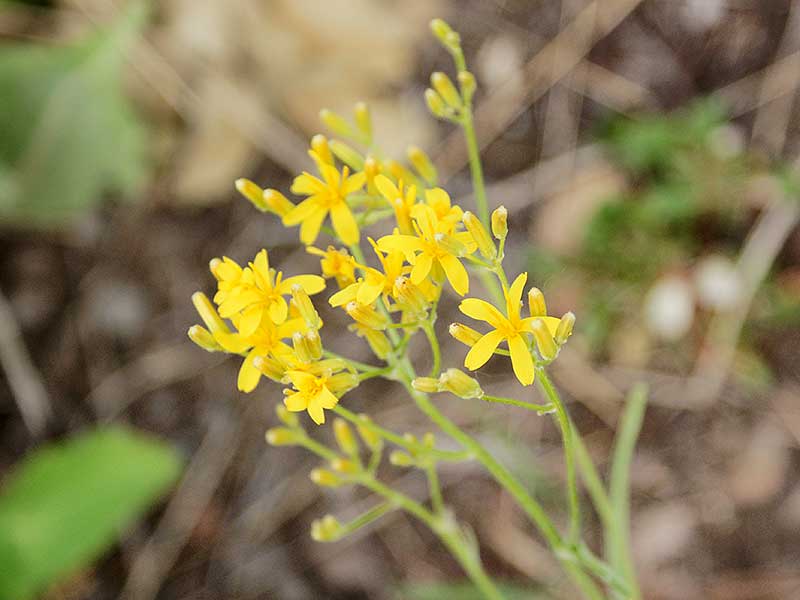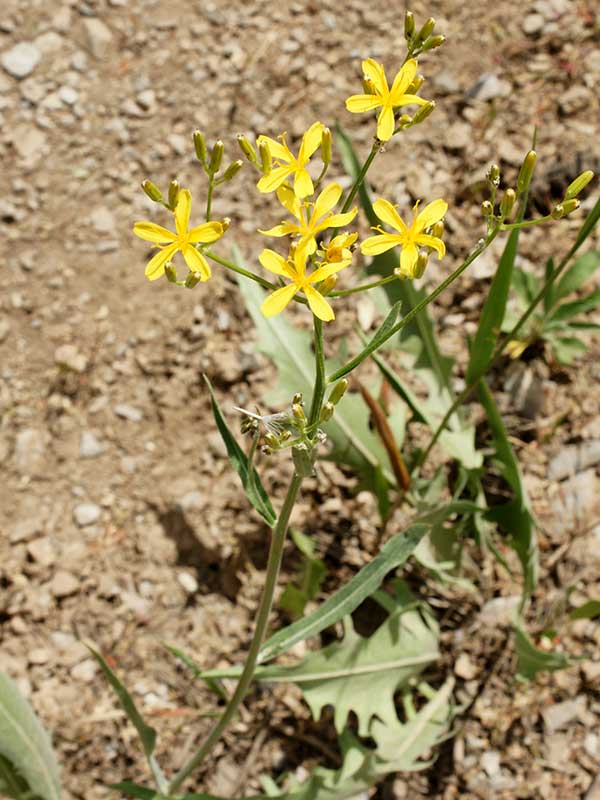Crepis acuminata / tapertip hawksbeard
- leaves (diagnostic) – long; many deep triangular, pointed lobes; upright, grey-green; milky sap
- flowers – 5-10 rays, no disc florets; yellow; up to 70 per plant
- dry, open places in foothills; commonly with sagebrush
Also known as: longleaf hawksbeard, mountain hawksbeard, tall hawksbeard
Synonym: Psilochenia intermedia
Tapertip hawksbeard is yet another yellow composite related to dandelion, prickly lettuce and satisfy. But for some reason, it took me two years to get it identified properly. Apps such as iNaturalist and PictureThis don’t seem to work that well on the yellow composites; it was “someone who knew” on a GTNP botanical foray who put me straight.
During those two years, I was fascinated by the leaves of this plant, and indeed, they are pretty diagnostic. There is a good closeup in the gallery. In botanical terms, the basal and lower stem leaves have “pinnatifid to runcinate- pinnatifid” blades. Apparently, that means they are sort of dandelion shaped. They are long and cut about halfway to the midrib into many triangular, pointed lobes. The lobes lack teeth. Since they are pretty much upright, grey-green, covered with matted hairs, and with a long, tapering tip, they don’t actually look at all like dandelions, at least to me.
The plants emerge from a taproot in early spring (May) and may get as tall as 30 inches. The stem is woolly and branching and like other member of its tribe, has milky sap. In my experience, it is usually found on what looks like bare ground, separated from other plants. It is rarely present in high abundance.
Flowering starts in mid-June or whenever you might consider it spring. I’m sure that in 2021, it was earlier. The inflorescence is an open, flat-topped cluster with a lot! (up to 70 or more) of small, narrow yellow flower heads. Each contains only 5-10 ray florets and no disc florets. Flowering is indeterminate, meaning that a single plant continually produces new flowers over a rather long period.
The fruit is a yellow-brown, dandelion-like achene and fyi, there are about 260,000 per pound. Both fertile, diploid and sterile apomictic polyploid plants occur naturally. The diploid form is more common in the northern parts of the range (including Idaho) and overlaps with the other forms farther south. You can’t tell the difference by looking at them.
Tapertip hawksbeard is typically found in dry, open places in foothills and at lower elevations in the mountains, commonly with sagebrush. In general, it occurs in regions with continental climates that experience dryness in all seasons. In the Valley, it is commonly found with arrowleaf balsamroot (Balsamorhiza sagittata), buckwheats (Eriogonum spp.), lupins (Lupinus spp.) and various bunch grasses. A very typical place to find this and see all that is the hill behind the Cedron cemetery. It is not found in riparian areas, floodplains, or subalpine or alpine forests,
Interesting bits – There are about 200 species of Crepis worldwide and twelve species native to the western hemisphere. The plants are often difficult to identify because they hybridize. Most of “our” species belong to a “complex in which the lines among taxa can only be drawn arbitrarily”. Ergo, the identification here is “likely” but not “absolute.” A BLM publication is available that will tell you at least as much as you might ever want to know about this species.
Tapertip hawksbeard leaves make up a large portion of the diet of pre-laying sage grouse hens. The chicks also feed on the leaves as well as on insects visiting the flowers. Although pollinators aren’t required for seed set, all hawksbeard species attract both generalist bees and specialists on composites.
Parts of the plant, at least, are edible. The Karok Indian Tribe in California is reported to have pealed and eaten raw stems. Ask your mother or look elsewhere for more details before trying this, please.
| Color | |
|---|---|
| Family | |
| Blossom size | |
| Inflorescence size | |
| Inflorescence type | |
| When? | |
| Where? |



